Fascinating Historic City
If you are interested in visiting one of the most beautiful old settlements in Australia, then you have to pay Frementle a visit
Fremantle is a neighbouring city of Perth, based at the mouth of the Swan River to the south of the capital and the largest city in the state of Western Australia. It a little cosy town with a small and wonderful historic city centre that has a lot to offer.
History: Establishment of the City
Fremantle is a port city, established in 1829 when the British ship HMS Challenger arrived at Swan River and claimed the land known at the time as New Holland. Captain James Stirling arrived shortly after and established the Swan River Colony in Perth. The city is named after English naval officer Charles Fremantle who created a camp on the site and was the captain on the HMS Challenger. Fremantle was different to the colonies of the east such in New South Wales as it was established by people who came by their own choice. It was a military and civilian settlement and initially not for convicts.
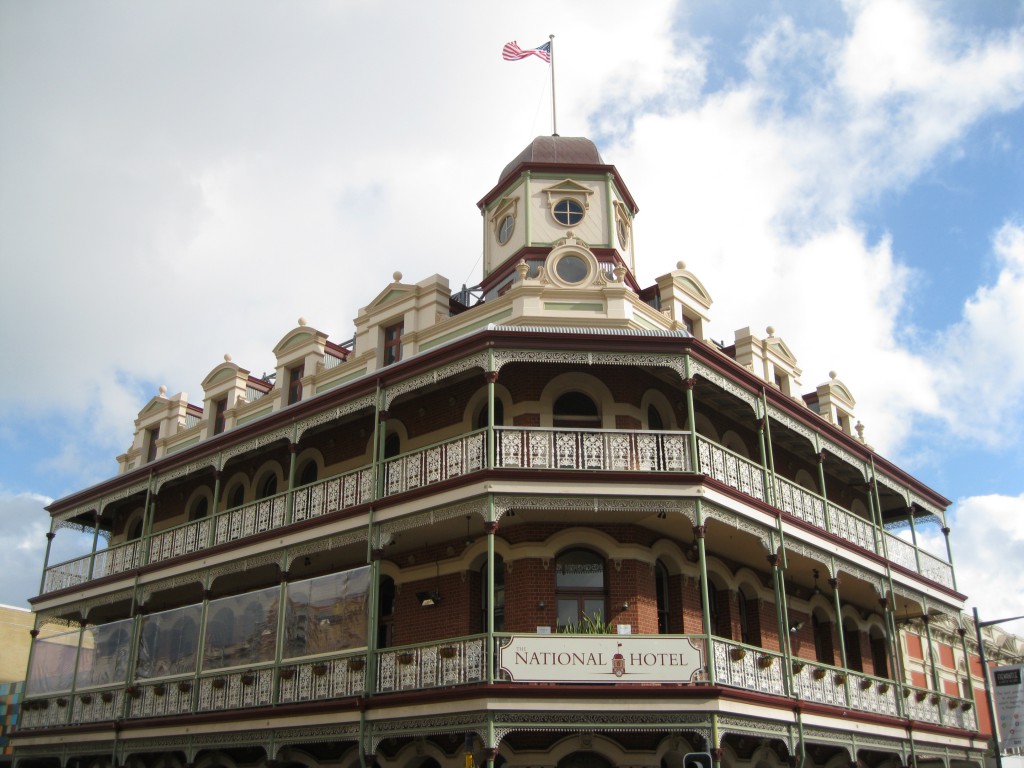
During the 1890s gold rush, Fremantle became the gateway to Western Australia. By attracting prospectors and encouraging them to trade and grow, it created a boost in agriculture that sparked an increase in wealth. All the new goods and gold seekers brought new businesses to town and made it a thriving community. This also attracted new hard working immigrants. The new wealth was reflected in the style of buildings constructed at the time such as the luxury accommodation you would find at the Esplanade Hotel which is a structure definitely worth checking out while you are in town.
During World War II Fremantle, being a port, served as the base for submarines in the Pacific. The Fremantle Submarine Base was the largest of its kind in the Southern Hemisphere during World War II. Furthermore the harbour accommodated battleships, troop transports, hospital ships and passenger ships.
Exploring Fremantle
If you are staying in Fremantle you should definitely check out Perth as well and vice versa. If you are staying in Perth it is easy getting to Fremantle. You can go by train and from Perth Underground station, based in the heart of town, it will take about half an hour. Fremantle is the final stop so it’s easy. Therefore it is also very simple going from Fremantle to Perth which is just going in the opposite direction. Fremantle train station is based in the city centre, so Fremantle is pretty much right at your feet, if you arrive from Perth.
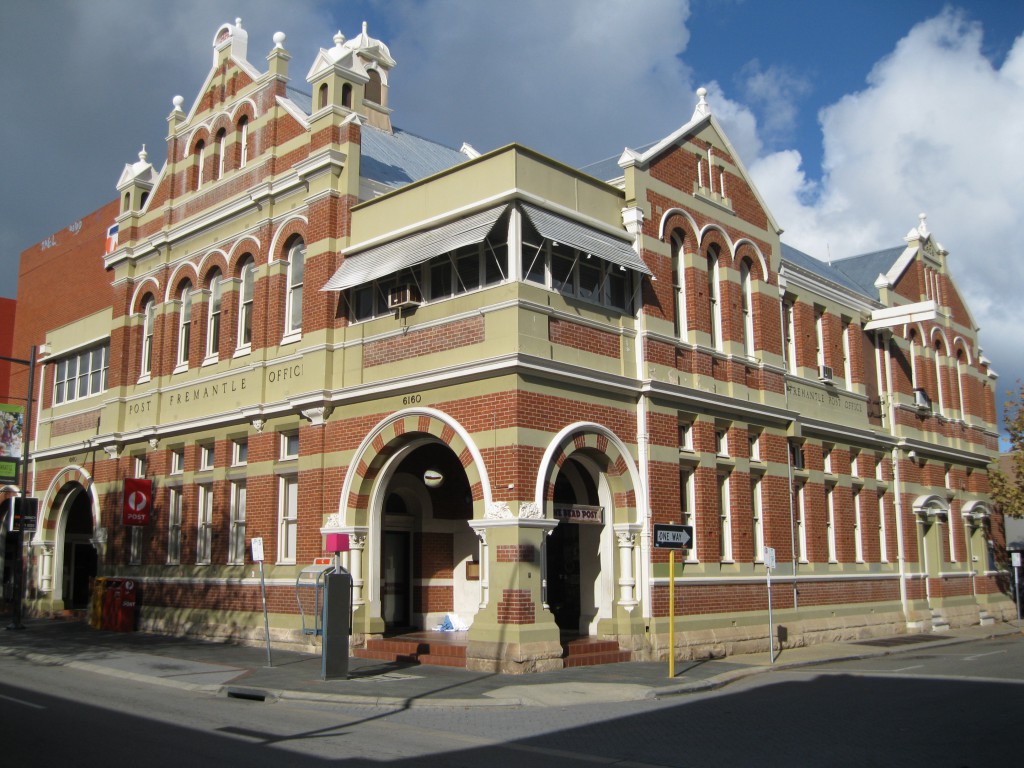
You can easily spend a day or two around Fremantle. There is plenty to do. You could check out one of the many cosy pubs, have a drink or lunch or check out one of the many cafés. Fremantle is much more historic than the Perth city centre and you will get a chance to see a lot of historic colonial style buildings, very typical to Australia. This style is also found in major parts of Sydney. Fremantle well known for having a lot of well-preserved 19th century buildings. There are more than 150 heritage sandstone buildings in town and there are more than 3000 heritage listed properties in the Fremantle area.
Fremantle Train Station
The train station itself is an interesting historical building. It was established at the current located in 1907 to better service the newly constructed Fremantle Harbour. The architectural style is Federation Free Classical and features Donnybrock stone, which is a fine to medium-grained feldspathic and kaolinitic sandstone, on the façade. It also has a rare example of a large train hall roof.
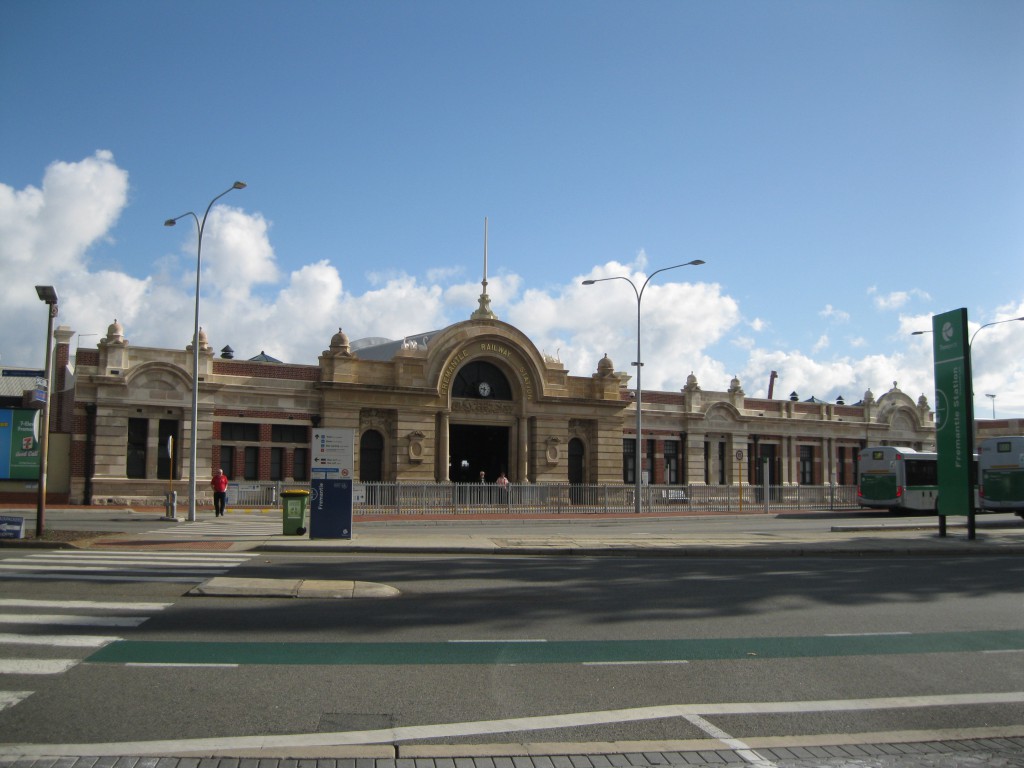
Fremantle Post Office
Not too far from the train station at 1/13 Market Street you will also find the Fremantle Post Office, yet another beautiful structure. It was built in 1907, restored in 1929 and 1987 and today it is still an operating post office. Like many other of the historic buildings in Fremantle, the Post Office was construction in the wake of the gold rush that created growth in the area. It was designed by Hillson Beasley and restored in 1929 during the Western Australian centenary and again in 1987 for the America’s Cup. Beasley was known using red banded bricks in his style of architecture.
The Fremantle Markets
The Fremantle Markets is a popular destination in town, located at the corner of South Terrace and Henderson Street. This is an indoor market based in a Victorian building where you can purchase all sorts of products, but mainly food to be consumed or to bring home. When Fremantle Markets first opened visitors would arrive by horse and cart. The foundation stone was laid in 1897 and it was completed in 1902.
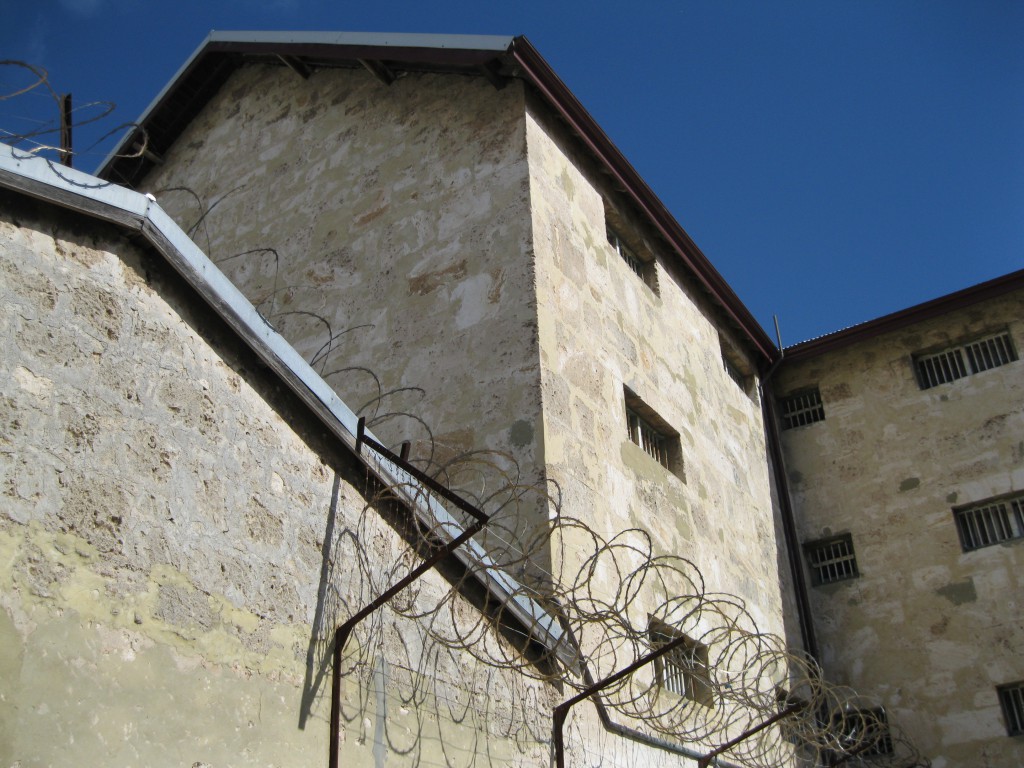
Until the 1950 it functioned as a wholesale and produce market and would have a big variety of goods due to the many immigrants the area would attract. Later it became a packing and distribution centre until the early 1970s and then went through restoration in 1975. Today it’s a big tourist attraction, it’s not a huge market but there are more than 150 stalls. Really depending on your preference you can spend some time in here strolling around
The Esplanade Hotel
The Esplanade Hotel is located opposite Esplanade Park at 46-54 Marine Terrace. It is located on the site of the first building used to house convicts sent from Great Britain in 1850. The first building was a warehouse constructed by Daniel Scott who was the first harbour master and the first chair of the town council. The first 75 convicts who arrived would stay here while they were constructing the future facility for the convicts which would be the Convict Establishment and later known as the Fremantle Prison.
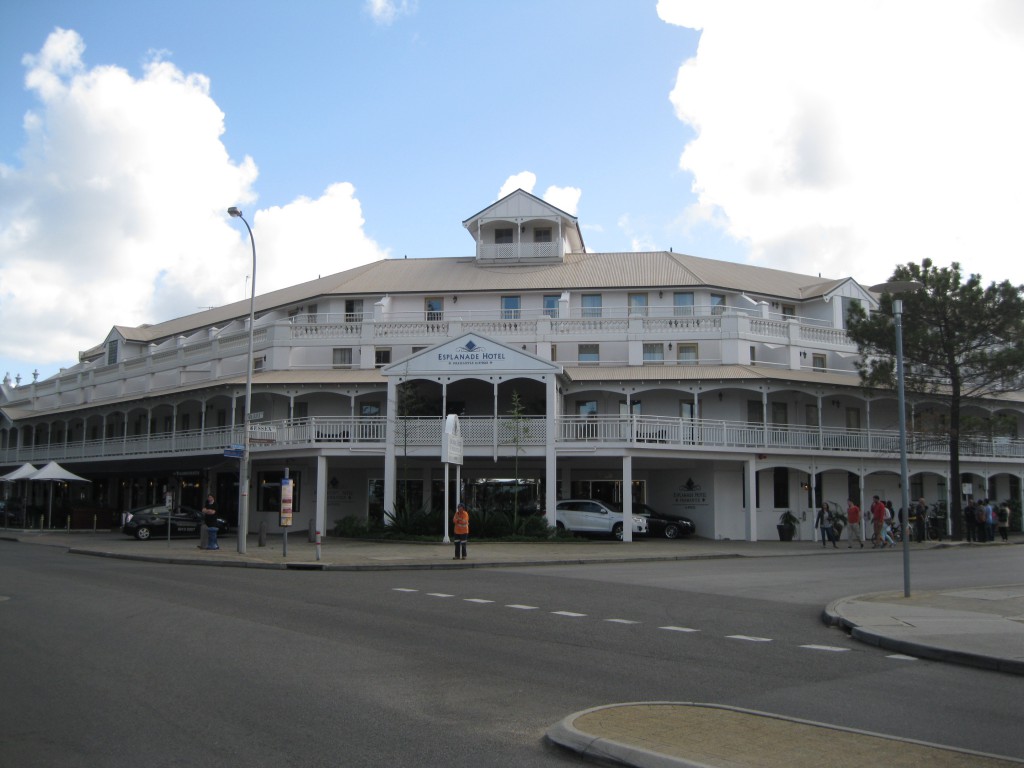
The restaurant at the Esplanade Hotel is called The Harbour Master as a reference to the past history. A later building was constructed on the site in 1875 which was extended in 1884 along Marine Terrace to the corner of Collie Street and was renamed Hall of Commerce. In 1895 the building was used for the first time as a hotel where the owners applied for a hotel licence. After renovations the Esplanade Hotel opened in 1896 which again underwent significant renovations in 1903. Over the years the hotel has gone through several renovations such as in 1985 where the building was enlarged to accommodate visitors in connection with the 1987 America’s Cup.
Fremantle Trades Hall
Fremantle Trades Hall at 6 Collie Street is another beautiful building designed in the style of Federation Free Classical. It opened in 1904 and was designed by Joseph Allen. It’s a two storey tall building with painted stucco ornaments and a corrugated iron roof. It was the headquarters of the local trades and labour movement until the 1960s and the “888” on the façade signifies their goal of 8 hours work, 8 hours leisure and 8 hours sleep.
The Round House
The Round House is another interesting historic piece of architecture. It is the oldest public building in Western Australia and was the first permanent structure in the Swan River Colony. It was built as a gaol and opened in 1831 and designed by Henry William Reveley who was a civil engineer to the Swan River Colony. It was used as a lock-up from 1857 to 1900 and was saved from demolition several times. There is a flight of steps constructed in 1838 which were made to accommodate a tunnel below and the view from High Street and the Round House. The surviving steps were altered in 1966 to allow for a railway track.
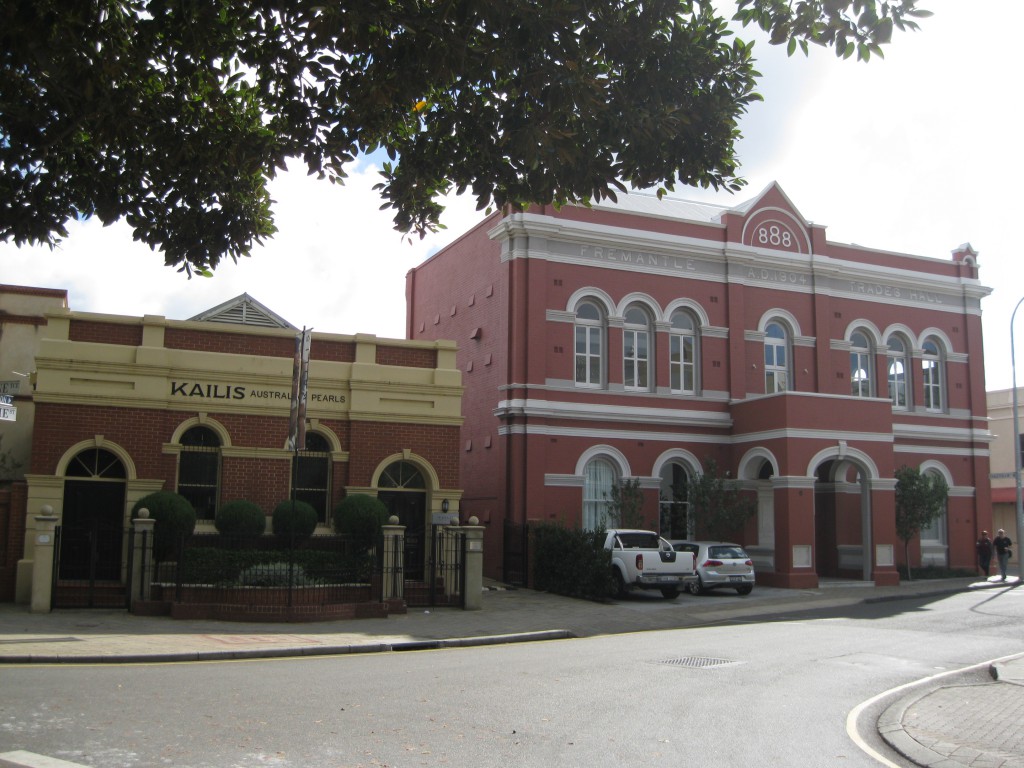
The structure is located at 15 Captains Lane and is elevated above High Street, so will have a great view High Street from the Round House. When you are on High Street you will also have a great view looking back up at the Round House at the end of the road.
The Whaler’s Tunnel
The tunnel below was constructed in 1837 by the Fremantle Whaling Company to accommodate the transportation of whale oil and merchandised between Bather’s Bay and Fremantle. This tunnel, also known as the Whaler’s Tunnel, was the first underground engineering project in Western Australia. The government provided expertise and convict labour to construct it.
The original tunnel was 64 metres long but was shortened to 46 metres later on. The much smaller “secret tunnel”, which can be seen branching from the tunnel was built in 1938 to provide access from the Gunner’s Cottage on the upper level to the Whaler’s Tunnel. This was used as an air raid shelter during World War II.
High Street
High Street is the main street running through the city. Here you will get a chance to see a lot of beautiful structures. Within twelve days of the settlement of the city, High Street was considered the main street, and the name was decided based on the tradition of naming main streets in England. In 1897 the city council wanted to construct a tram on High Street which received a lot opposition from the locals. Therefore the details were not finalised before 1904. The tram service operated until late 1952.
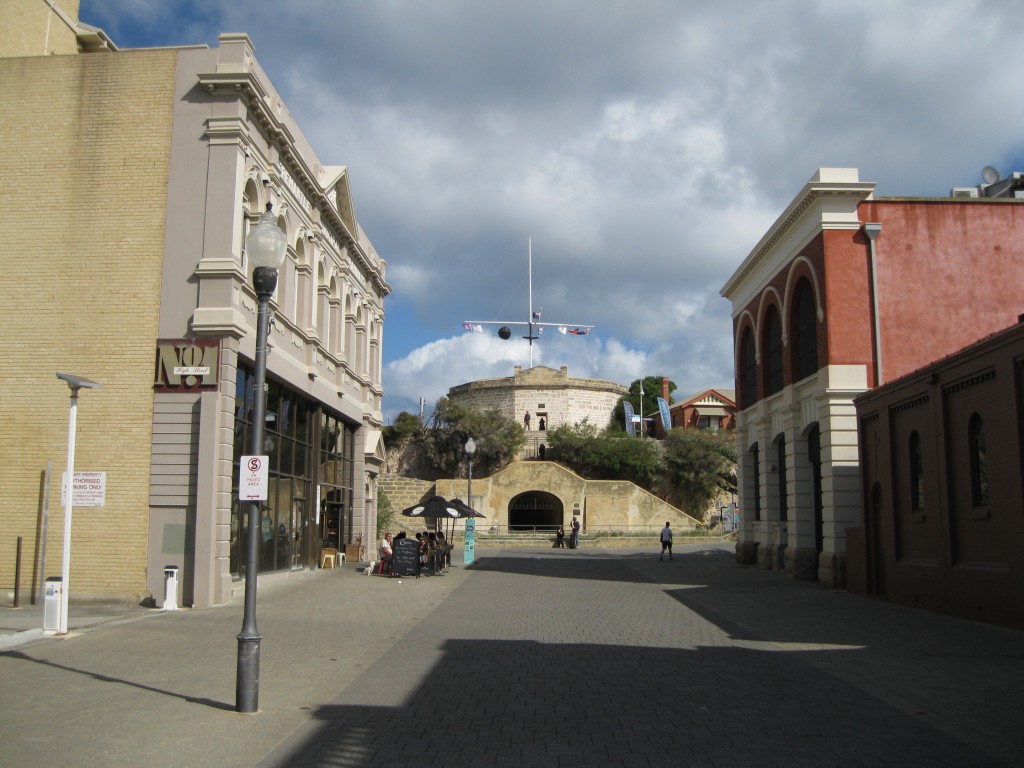
There are a significant number of heritage buildings on High Street. The Union Bank Building at 4 High Street which was purchased by the Union Bank of Australia in 1881. A new building was erected in 1889 which is one based on the address today.
At 98 High Street, the National Hotel is located, which design is in the style of Federation Free Classical. It was originally built as a single storey shop in 1868 and later occupied by the National Bank in the early 1880s. When the bank relocated in 1886 it was converted into the National Hotel. It was acquired by to gold rush prospectors, Michael and Daniel Mulcahy, who enjoyed great success and would become well-known hotel proprietors.
The P&O Building
There are many noteworthy buildings around Fremantle. Another one is the P&O Building at 17 Phillimore Street. It was originally built by the Australian Union Steamship Navigation Company (AUSNC) which was the oldest major Australian company of its kind. It was taken over by P&O in 1914. C.L. Oldham was hired to design the building in 1903. It’s a two storeys tall, the central section is slightly projected and is surmounted by a prominent pediment. The AUSNC logo is place in the spandrel and underneath you will find the name P&O Building.

Bather’s Bay
There is a lot of interesting history associated with this area. Bather’s Beach is a remnant is of the original foreshore prior to the development of the port and the town of Fremantle. It’s a part of the Arthur’s Head Reserve which has a significant value due to its ancient limestone headland, its connection to the earliest inhabitants of Australia and its part in the history of European settlement in 1829. Europeans migrants arrived at this shore until 1897 where a port was established on the northern shore of Arthur’s Head.
Bather’s Bay was the first port of the colony and housed several buildings such as the harbour master’s facilities, custom house and bond stores. Today only the commissariat store from 1852, some of the long jetty piles from 1873 and the Kerosene Store from 1884 remain.
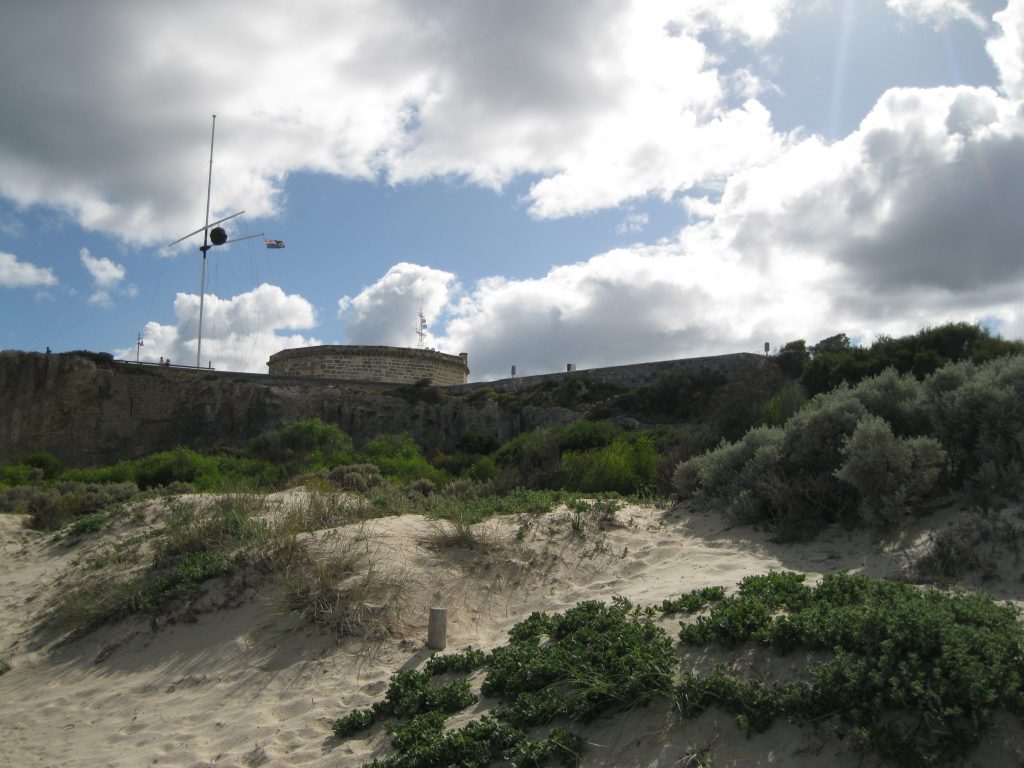
Bather’s Bay is a nice beach area where you can have a little stroll along the shore. It’s located just at the foot of the Round Tower and the Whaler’s Tunnel, so you could head down to the beach after you have check out those sights.
Fishing Boat Harbour
After you have strolled around the streets of the city you could head down to the Fishing Boat Harbour across the Esplanade Park where you will see the Fremantle Esplanade Ferris Wheel close to the harbour. This is a very cosy area to have a chill and check out the atmosphere at the harbour. There are several café and restaurants where you can have a snack or lunch. You would also just have a quiet walk around the area.
The Statue of Bon Scott
At Fishing Boat Harbour, not too far from Esplanade Park, a statue of former AC/DC singer Bon Scott, born Ronald Belford Scott, is located. This is definitely worth checking out even though you may not be an AC/DC fan as this adds a cool touch to the city and it is a great photo opportunity. Bon Scott was born in Scotland in 1946 but his family immigrated to Australia in 1952 and settled down in Fremantle in 1956 where he went to primary school and high school. He played with different bands before joining AC/DC in 1974 which would be his big break through. He passed away in 1980.

Fremantle Prison
The absolute highlight in Fremantle is the Fremantle Prison, located at 1 The Terrace. When you visit cities with an old historic prisons, it is highly recommended that you pay them a visit. The history and the atmosphere of old prisons are so fascinating and in the case of the Fremantle Prison you will not be disappointed. You will get a unique insight into the history and the stories behind the facility. You will hear about how convicts and prisoners were treated, the lives and you will be realise how much the times have change since the prison was opened and through the years of operation.
The Convicts & Prisoners of Fremantle Prison: Historical Bullet Points
The prison was originally built between 1851 and 1859 to accommodate convicts and initially known as the Convict Establishment. The first convict transport sailed into Fremantle Harbour in 1850 and the first convicts would move into the mail cell in 1855. It was renamed Fremantle Prison in 1867 and the year after, the last shipment of convicts arrived. Nearly 10,000 convicts passed through the prison from 1850 to 1868. By 1886 the prison would only hold 60 convicts in a prison built for having 1,000 inmates and the same year the prison was transferred to the colonial government to sentence local prisoners.
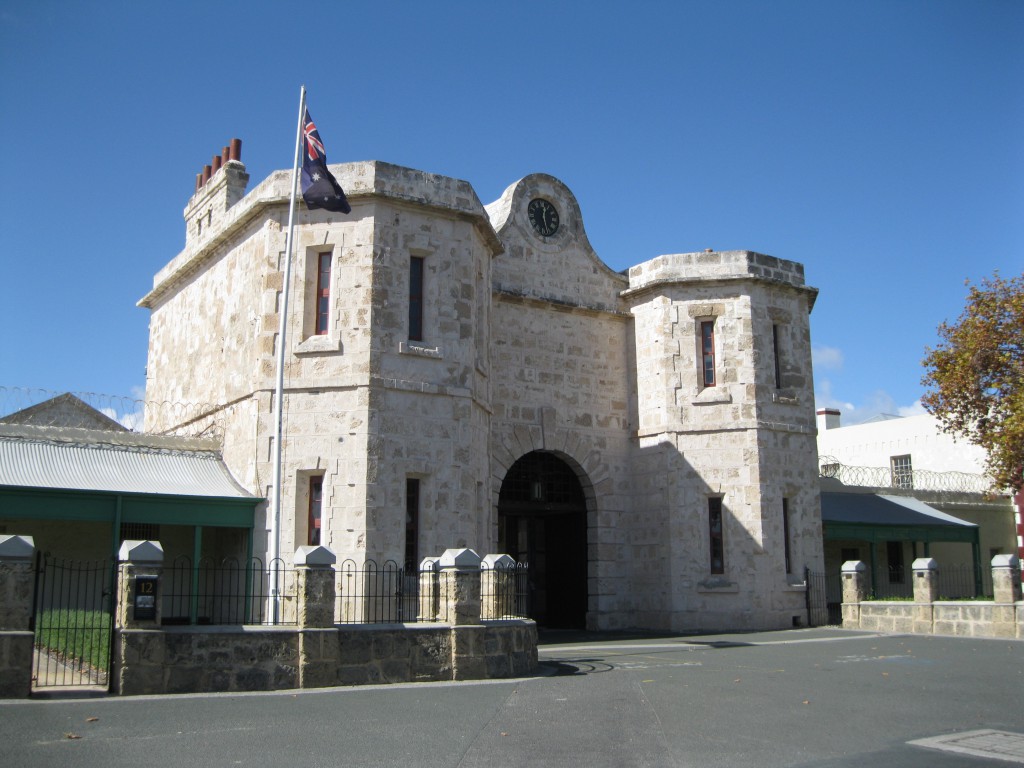
When the gold rush arrived in 1890, the population boomed and the prison would yet again be busy and by then it had become the main prison of the colony. During World War II a part of the prison was used as a military detention centre as it would house prisoners of war and so-called “enemy aliens” who were a large number of Italian Australians.
It was an operating prison until 1991 after prisoners burnt and trashed a couple of the divisions in 1988 where prison guards were taken hostage due to prisoner discontent. It was a place of hangings, floggings, convict escapes and prisoner riots. Significant changes were made at the prison in the 1960s and further reorganisations in the 1970s and 1980s but the culture at the prison was resistant to change.
The First Batch of Convicts
The first batch of convicts arrived on the 22nd anniversary of the foundation of the colony which was a bit of a coincidence. The Scindian carried 75 male convicts, 50 prisoner guards and their families. Captain Edmund Henderson was the royal engineer in charge of the convicts. When they arrived it was a wind-swept town of ramshackle wooden houses and limestone buildings. As the prison wasn’t yet constructed it was the convicts’ first job to convert a warehouse on South Beach into a temporary prison.

In the day the convicts where sentenced for life, sent from England mostly for petty crimes due to poverty such as steeling food. Most of them were English, but there were also Irish, Welsh and Scottish. The colony requested not to receive any political prisoners and people who had committed serious crimes. This promise was initially kept but only for a few years as they would soon receive serious offenders and on the last shipment in 1868, 62 Irish political prisoners were on board.
The Role of the Convicts
There is no doubt that the convicts played an important role in the development of the colony and the history of Western Australia. During the first two decades of the Swan River Colony they suffered from a shortage in the work force as many of the settlers headed east to the more established colonies in New South Wales and Tasmania. This was due to the lack of public infrastructure such as road, bridges, jetties, sewerage systems, hospitals and schools.
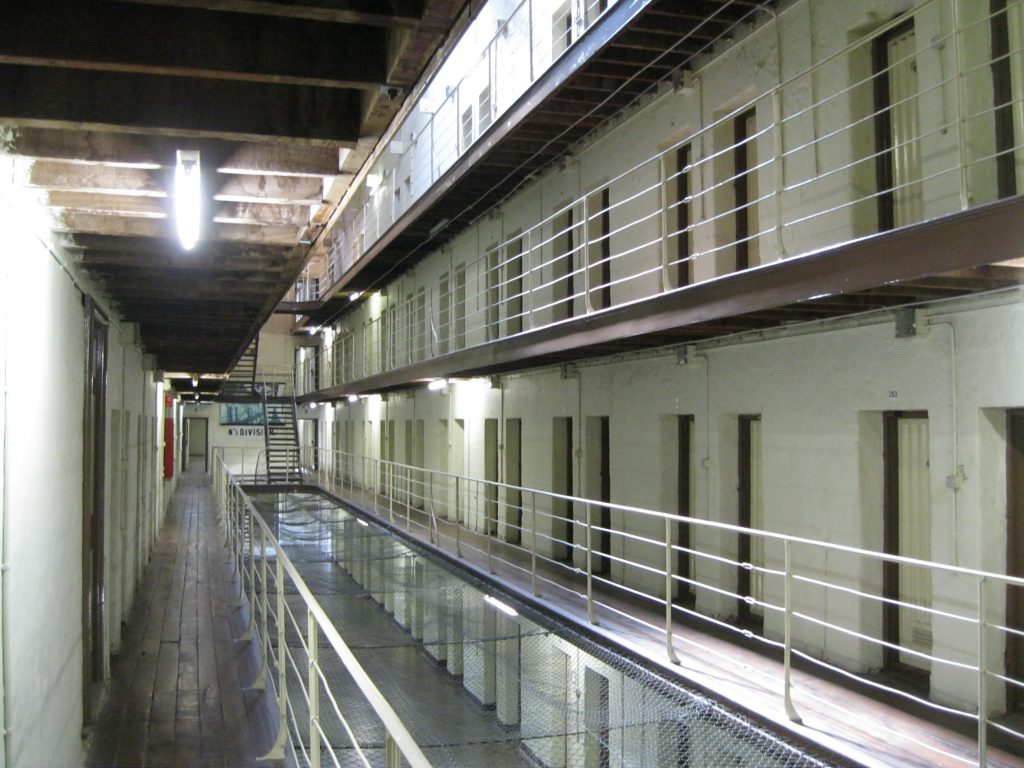
With only 6,000 settlers remaining by the 1840 a collapse of the colony was likely to occur. Convict labour was seen as a solution to the challenge and the British government was looking for an answer to their growing prison population. Therefore on 6 November 1849 it was agreed that the Swan River Colony would become a penal settlement.
The Return to Freedom
Very few convicts served their full sentence especially if they followed the rules. There was a staged system to return convicts to the community, which included separate confinement at the convict establishment and then a period of public work. The convict would receive a ticket of leave followed by a conditional pardon which could then lead to a certificate of freedom. If you had been granted a ticket of leave you would be followed closely and would not be allowed to leave the colony.
Many would find work through convict hiring depots and had to travel far to find work. They would earn as much as free workers, 1 pound a month, but also had to pay for their initial transportation from England which was 1 pound for each year of their sentence. The ticket could last from one to four years and the convict who conformed to the conditions would be rewarded with a conditional pardon. This would restore them to citizens in the colony which they could now leave but they were not allowed to return to Great Britain. After the conditional pardon phase they could receive a certificate of freedom, giving them the same rights as other free citizen. Very few convicts received a full pardon though.
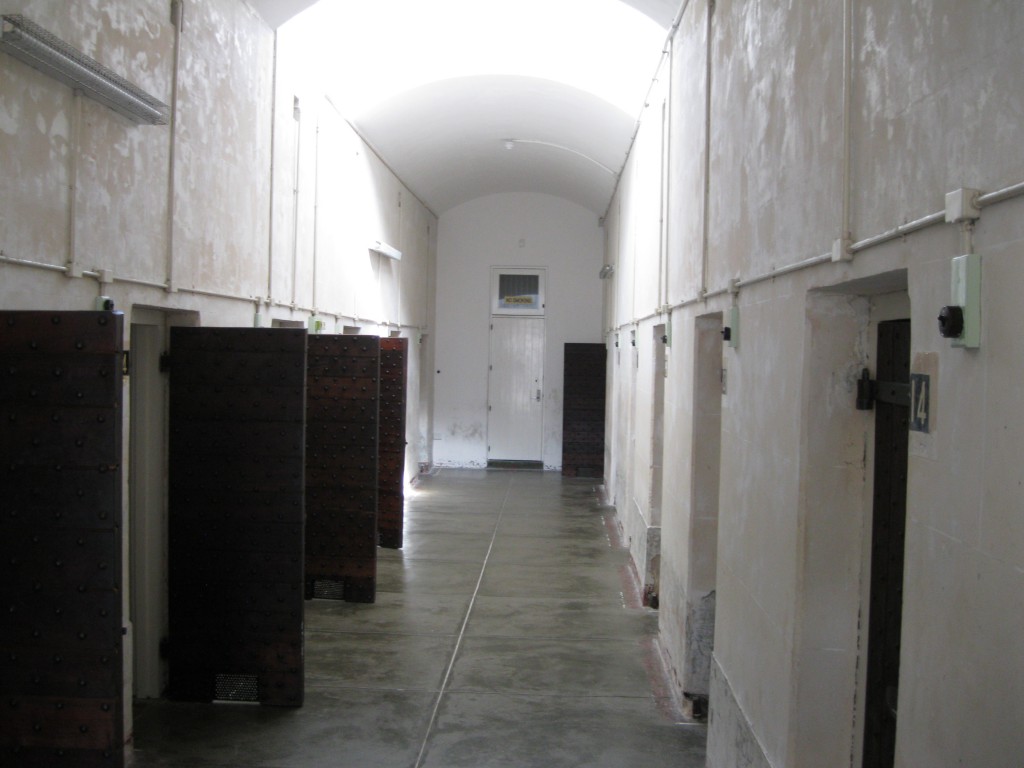
Roughly a third of the convicts left the Swan River Colony after serving their time. Those who stayed tried to make a living for themselves in the colony. Some led productive lives, other found it difficult to find work and to be treated fairly. Many were trapped in an endless cycle of violence and returned to the prison and died there. Some spent their final days as inmates in lunatic asylums or living at Mount Eliza Invalid Depot. From 1850 to 1868 the population of the colony went from 5,886 to 22,738 who mostly were former convicts. Men were outnumbered women by five to one so it was difficult for the convicts to find a wife and start a family. The ex-convicts were vulnerable and many of them would turn to alcohol which was a major issue.
The Entry Complex
The entry complex was built by convicts between 1854 and 1855. It included the gatehouse, offices and accommodation for prison officials, an entry court and military and civilian guardhouses. The prison was managed from these buildings. An inner gate separated this section from the prison itself. Prisoners would enter and exit the gates at the beginning and end of their sentence. The prison was altered and additions were built as well but the prison was in constant operation in its more than 136 years of service. The gatehouse, constructed in 1855, consists of the main gate flanked by two towers. It accommodated the gatekeeper, the chief warden and the deputy superintendent.
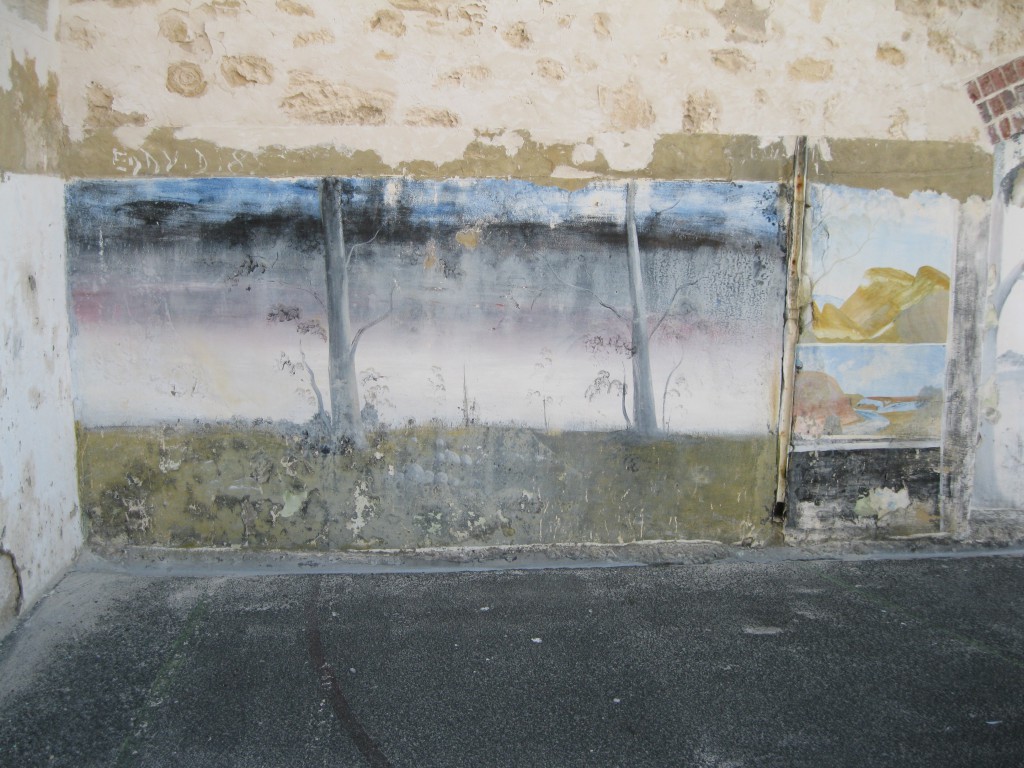
The tower clock was made in London in 1854 and was installed onto the tower in 1856. The English fortification design was made to reinforce that the prison would protect the citizens outside the prison from the convicts on the inside. The wray gates were built in 1855 from iron taken from the convict ships. The iron was of poor quality, therefore they gates were constructed with no need of welding. By the late 1900s the ground floors were used for the main visitor entry and search rooms.
The vehicle dock had an inner and outer gate through which vehicles would be searched when they would enter and leave the prison. Pedestrians entered through a door on the north flank. There are concrete flagstones which show the original size of the sally port, which is a secured and controlled entryway. By the 1920s this was extended to allow for vehicles.
The Tours of Fremantle Prison
There are several tours of the prison, the day tour, the evening tour and the tunnel tour. The night tour is done with torchlights offers a couple of surprises to add to the atmosphere and can be a bit scary and spooky to some people. The tunnel tour is for the more adventurous people which will lead you through the labyrinth of tunnels located 20 metres below the prison.
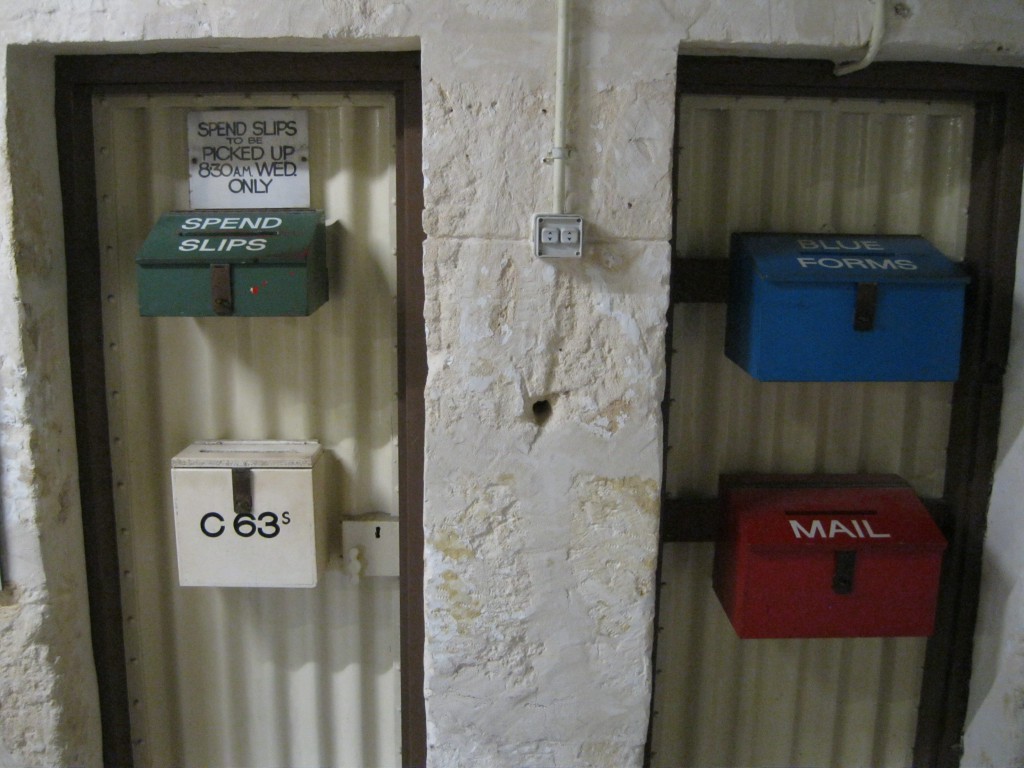
The Day Tour of Fremantle Prison
On the day tour you will be guided through the facilities and it will be narrated by a guide. You will see the different recreational yards, shower facilities, the divisions, the cells, the death row and the church. On the tour they will distinguish between convicts and prisoners. The former were the people sent to Australia from Great Britain in the early days of the colony for petty crimes. The latter were criminals sentenced in Australia in more recent times.
The Shower Facilities & the Front Yard
The guided tour starts off by viewing the simple but still decent looking shower facilities which the inmates had. You will then head into the front yard where you will have the Main Block of the prison facility right in front out you. This is a great opportunity for taking some photos of the structure with is quite beautiful and well-maintained. If you turn around and look towards the gatehouse area where you came from, you will note the how the facility is fenced off with barbed wire at the top. Also an interesting shot.
The Divisions
After you have had a while to check out the front yard you will head into the Main Block where you’ll get a chance to explore the divisions and some of the cells. Initially you will guided around Division No. 1. You will notice how the open space between the ground floor and the 1st floor is fenced off. On the wall there are request boxes and a prison timetable on display which will give you an interesting insight into the daily life of the inmates.
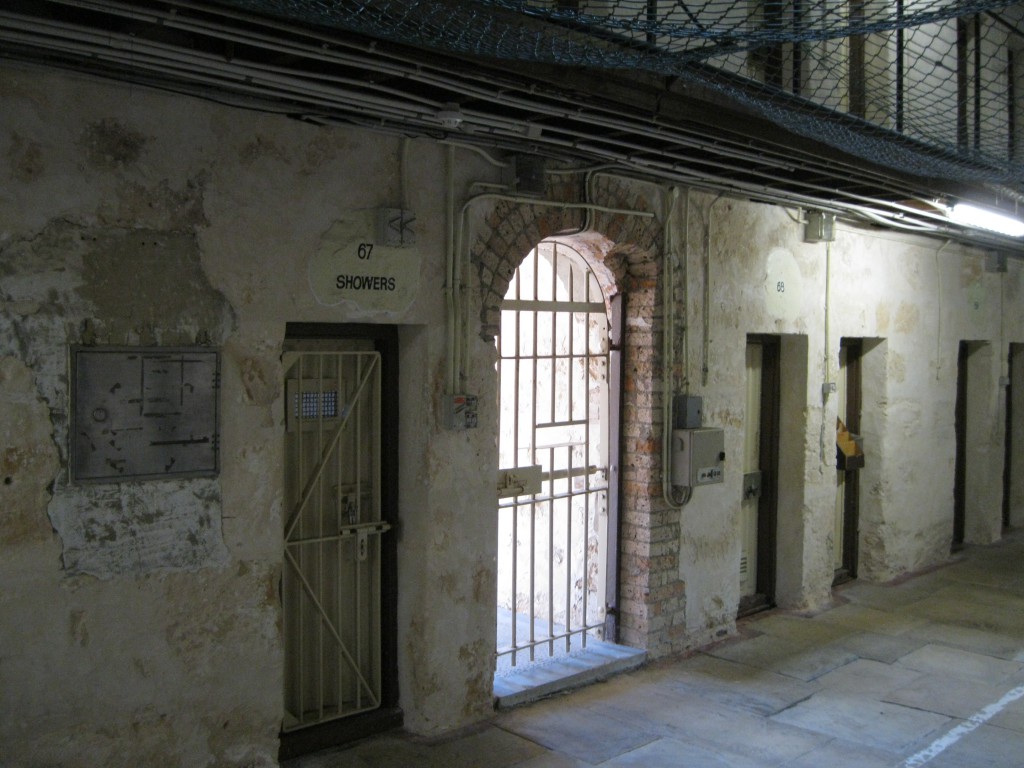
You will continue into Division No. 2 where you will also get an opportunity to head to the 1st floor and have both a view of this level and down towards ground floor. Afterwards the tour heads towards Division No. 3 via the 1 st floor and then into the church. An interesting details in the church is how this is the only place in the prison where you have no bars on the windows.
The Life in the Cells
The life in the cells didn’t change much from 1855 to 1991. The only major change was the increase of cells size and introduction of electricity. In 1899 the size of the cells were increased by removing the wall between two cells which took many years to complete. In 1907 electricity was progressively introduced into the cells. From 1852 to 1860 the cell sizes were 1.2 metres by 2.1 metres (4 feet by 7 feet).
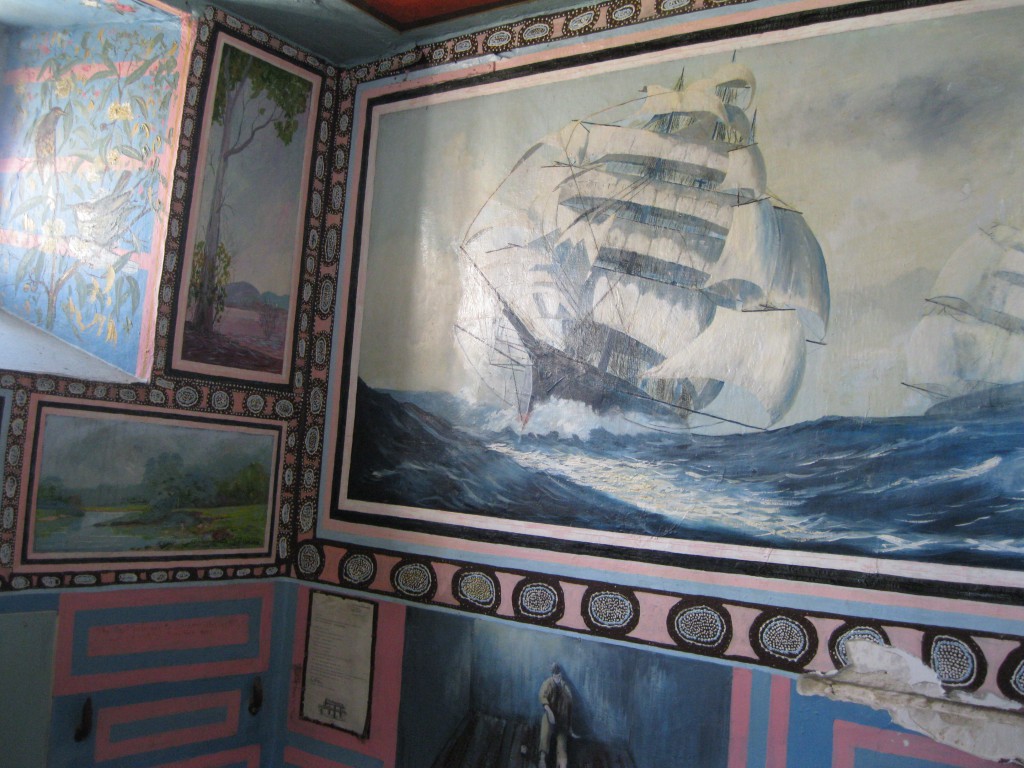
After the 1950s metal framed beds replaced the hammocks of the 1950s. Bunk beds were introduced in the 1960 which allowed for related prisoners or close friends to share cells and it also made it possible to double up the number of inmates. This can also be seen in some of the cells.
Some of the cells are on display so you can see how little room the prisoners had. There are several cells with different setups.
The Art Work of the Cells
Several of the cells are quite interesting to have a closer look at. One of them in particular as it wasn’t allowed for prisoners to apply art work on the cell walls but in one case permission was granted for therapeutic reasons. The art work is very impressive and will leave quite an impression on you. In the last 12 months of operation of the prison, wall paintings were allowed in cells and in the recreational areas as a farewell gesture.

The Recreational Yards
The recreational yards are quite interesting. Also here you will be able to view some of the art work of the prisoners on the walls. In one of the yards there’s a little watch tower, in front of the main tower, for when the guard has to go to the toilet. It’s really fascinating to experience the conditions the convicts and prisoners had to live under when they had to get a breath of fresh air. It was in a very confined space.
Death Row
You will get the opportunity to have a look inside a couple of the cells on death row where prisoners would spend their time before execution. This is known as the Solitary Confinement. They were hung in a location called the Gallows just opposite the Solitary Confinement which you will see as well.
Australia had the death penalty until 1984 but it was used for the last time in 1967. The last person to be executed at Fremantle Prison and in Western Australia was Eric Edgar Cooke on 26 October 1964 who was convicted for one murder but was suspect for having committed several.

It’s a bit creepy to see both the death row, the cells and where the prisoners were executed, but it is also very interesting and it is a part of the amazing history of the colony and Australia. It will definitely leave an impression on you which is one of the reasons why a visit to Fremantle Prison is so powerful on the coolest experience in town.
The Offices & the Visiting Rooms
Towards the end of the tour you will head through the offices of the administration of the prison and then back into the front yard. You should check out the visiting rooms which are based towards the entry gate where the inmates were allowed to have visitors. On the other side of the gate you will find a gift shop as well.
